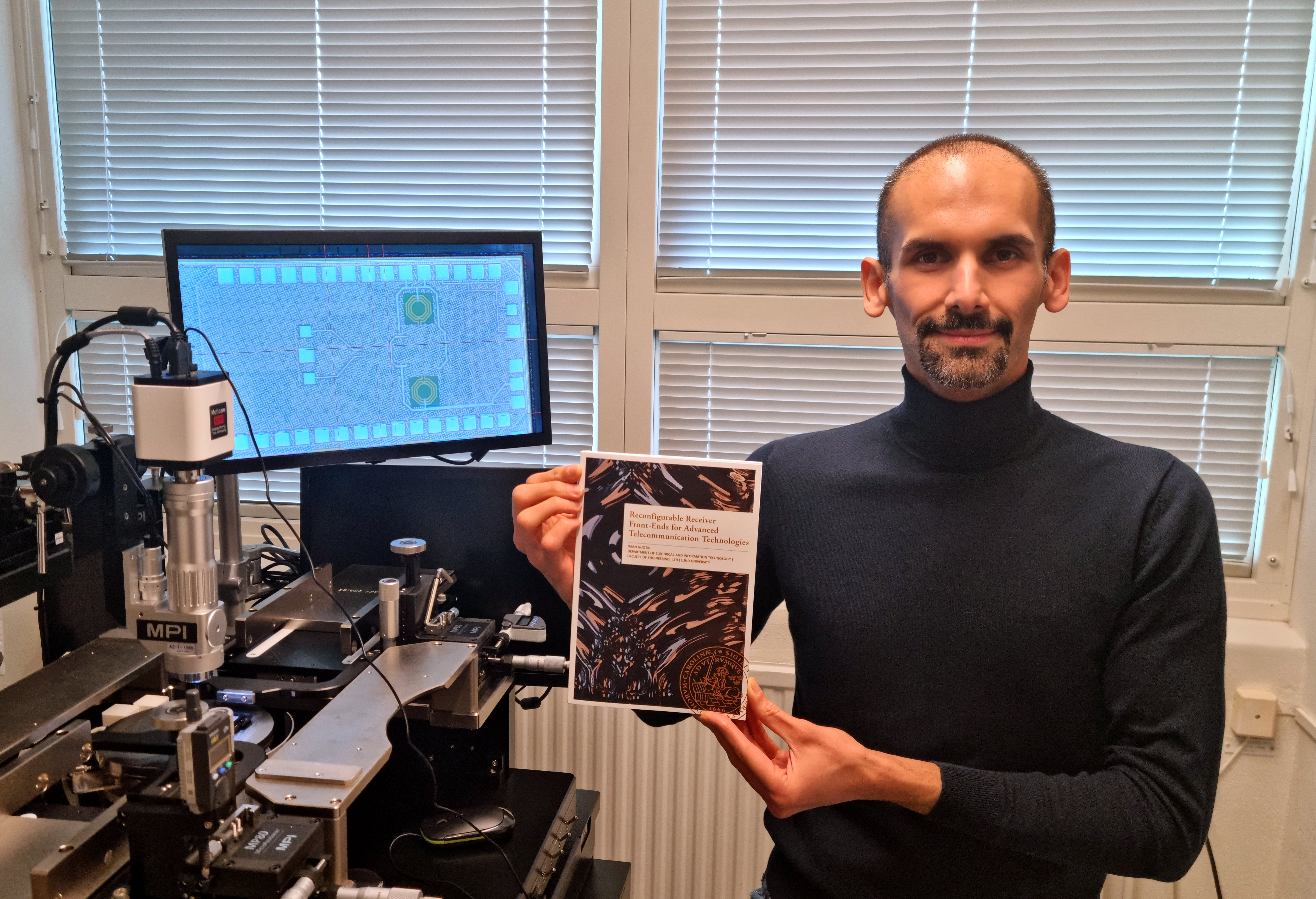Kalendarium
PhD thesis defence: Iman Ghotbi

Disputation
From:
2023-11-24 09:15
to
13:00
Place: E-house, E:1406
Contact: iman [dot] ghotbi [at] eit [dot] lth [dot] se
Reconfigurable Receiver Front-Ends for Advanced Telecommunication Technologies
This thesis primarily focuses on the design and implementation of a low-voltage, low-power RFFE tailored for direct sampling receivers in 5G FR1 applications. The RFFE consists of a balun low-noise amplifier (LNA), a Q-enhanced filter, and a programmable gain amplifier (PGA). The balun-LNA employs noise cancellation, current reuse, and gm boosting for wideband gain and input impedance matching. Leveraging FD-SOI technology allows for programmable gain and linearity via body biasing. The LNA's operational state ranges between high-performance and high-tolerance modes, which are apt for sensitivity and blocking tests, respectively. The Q-enhanced filter adopts noise-cancelling, current-reuse, and programmable Gm-cells to realize a fourth-order response using two resonators. The fourth-order filter response is achieved by subtracting the individual response of these resonators. Compared to cascaded and magnetically coupled fourth-order filters, this technique maintains the large dynamic range of second-order resonators. Fabricated in 22-nm FD-SOI technology, the RFFE achieves 1%-40% fractional bandwidth (FBW) adjustability from 1.7 GHz to 6.4 GHz, 4.6 dB noise figure (NF) and an OOB third-order intermodulation intercept point (IIP3) of 22 dBm. Furthermore, concerning the implementation uncertainties and potential variations of temperature and supply voltage, design margins have been considered and a hybrid calibration scheme is introduced. A combination of on-chip and off-chip calibration based on noise response is employed to effectively adjust the quality factors, Gm-cells, and resonance frequencies, ensuring desired bandpass response. To optimize and accelerate the calibration process, a reinforcement learning (RL) agent is used.
Link to thesis in LUCRIS:
Zoom link:
